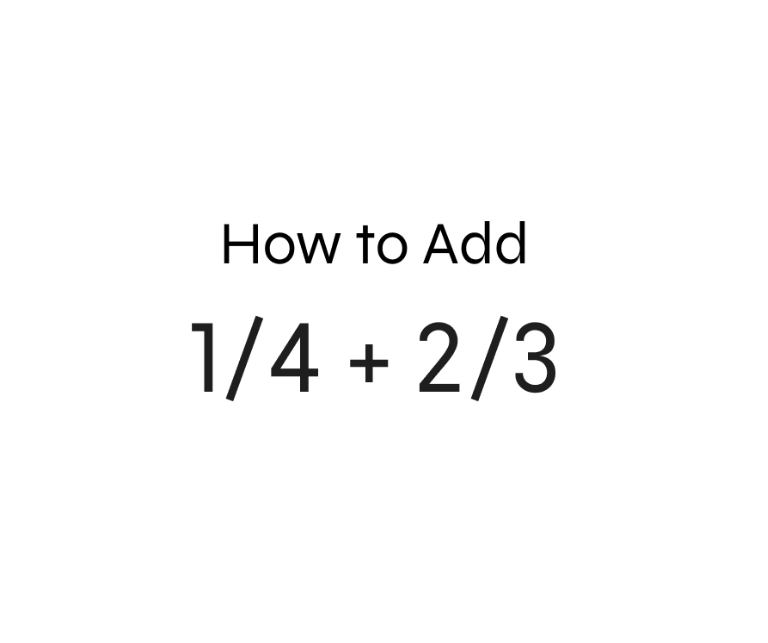
What is 2/3 + 1/4?
Mathematical operations involving parts of whole numbers can be challenging for many Maths students, especially when dealing with calculations like 2/3 + 1/4. Mastering the technique of combining these numerical values is vital in arithmetic learning. In this blog post, we'll delve into the key principles of adding such numbers, provide strategies for smooth integration, and share useful advice to improve your arithmetic skills, all with the help of free resources available to you.
What Is A Denominator?
First and foremost, as a Maths student you need to grasp the concept of a denominator. This term refers to the bottom number in a fraction, indicating how many equal parts a whole is divided into. For students dealing with 2/3 and 1/4, addition is only possible if both fractions share the same bottom number. Without the same denominator, effectively, each fraction is based on a different division of the whole, making direct addition impractical.
To align two fractions for addition, it's essential to find a shared base or common denominator. In the example of 2/3 and 1/4, the different bottom numbers, 3 and 4, do not have a direct multiplicative relationship. However, 12 serves as a suitable shared base for both. To adjust 2/3, multiply its top and bottom by 4, resulting in 8/12.
Similarly, multiply the top and bottom of 1/4 by 3, getting 3/12. The sum of these adjusted values is 8/12 + 3/12, which simplifies to 11/12, demonstrating a successful addition process.
Useful Strategies For Addition
A helpful method for adding fractions like 1/3 and 1/5 is to find their lowest common multiple, in this case, 15. Adjust 1/3 to 5/15 and 1/5 to 3/15 by multiplying their numerators and denominators. Adding these gives 8/15.
When adding or comparing fractions with different denominators, finding a common denominator is essential. In this case, we're looking at the fractions 1/6 and 2/9 and aiming to find a common denominator.
Steps to Find a Common Denominator:
Identify the Denominators: For 1/6 and 2/9, the denominators are 6 and 9.
-
Find the Least Common Denominator (LCD): The LCD for 6 and 9 is 54.
-
Adjust the Fractions:
-
For 1/6: Multiply both the numerator (top number) and denominator (bottom number) by 9. This turns 1/6 into 9/54.
-
For 2/9: Multiply both the numerator and denominator by 6. This changes 2/9 to 12/54.
-
- Combine the Fractions: Add the adjusted fractions: 9/54 + 12/54 = 21/54
-
Simplifying the Result:
-
To simplify 21/54, find the greatest common divisor (GCD) of 21 and 54.
-
The GCD is 3, so divide both the numerator and denominator by 3.
-
This simplifies 21/54 to 7/18.
-
Conclusion
Fraction addition need not be daunting for any student. By grasping the concept of the common denominator, employing useful strategies, and closely attending to the numerators, you can navigate the intricate realm of fraction arithmetic with ease and precision as part of your study. Keep in mind that practice makes perfect, and there are numerous free online resources available to aid in enhancing your fraction addition skills during study sessions.
So, go ahead, challenge yourself with complex problems such as 2/3 + 1/4 as part of your study, and reap the rewards of mastering one of the fundamental building blocks of mathematics.
Related: Why is Math Important?